The Good Earth by Pearl S. Buck is a timeless masterpiece that delves into the complexities of human nature, societal dynamics, and the relentless cycle of life. Set in rural China during the tumultuous period of the early 20th century, the novel follows the life of Wang Lung, a poor farmer, as he navigates the challenges of poverty, wealth, and family. Through Wang Lung’s journey, Buck paints a vivid portrait of the Chinese countryside, its customs, and the struggles of its people. As Wang Lung rises from humble beginnings to become a prosperous landowner, he grapples with the temptations of greed and power, ultimately realizing the importance of his connection to the land and the simplicity of a life lived in harmony with nature. The Good Earth Book Summary is a poignant exploration of human desires and the enduring bonds between individuals and the earth they call home.
The Gook Earth Book Summary
Introduction: The Good Earth by Pearl S. Buck is a literary treasure that transcends time, offering readers an immersive journey into the heart of rural China during the early 20th century. This masterpiece delves deep into the human experience, exploring themes of ambition, resilience, family, and the profound connection between humanity and the land. Through the captivating narrative of Wang Lung, a poor farmer who rises to prosperity, Buck paints a rich tapestry of Chinese culture, tradition, and the relentless cycle of life. In this comprehensive review, we will delve into the intricacies of Buck’s narrative, examining its thematic depth, character development, cultural portrayal, and lasting impact.
Thematic Depth: At its core, The Good Earth is a profound exploration of the human condition and the eternal struggle for survival and self-fulfillment. Through Wang Lung’s journey from poverty to wealth, Buck adeptly examines the complexities of ambition, morality, and the consequences of one’s actions. Wang Lung’s relentless pursuit of land and prosperity exposes the innate human desire for security and status, yet it also highlights the moral dilemmas and sacrifices that accompany such aspirations. the novel poignantly underscores the transient nature of wealth and power, reminding readers of the enduring value of humility, compassion, and familial bonds.
Character Development: Buck’s masterful characterization breathes life into the inhabitants of The Good Earth Book Summary, making them resonate with authenticity and depth. Wang Lung, the central protagonist, undergoes a remarkable transformation throughout the novel, evolving from a humble farmer to a wealthy landowner. His journey is marked by moments of triumph and tribulation, shaping his character and worldview. Wang Lung’s complex relationship with the land serves as a metaphor for his own internal struggles and growth, as he grapples with themes of identity, morality, and the pursuit of happiness. Similarly, other characters such as O-lan, Wang Lung’s stoic wife, and his ambitious sons add layers of complexity to the narrative, reflecting the diverse facets of human nature and society.
Cultural Portrayal: Buck’s meticulous portrayal of Chinese culture and tradition enriches the narrative, offering readers a glimpse into a bygone era. From the vibrant festivals and rituals to the intricacies of rural life, The Good Earth immerses readers in the sights, sounds, and customs of early 20th-century China. Buck’s depiction of gender roles, familial obligations, and social hierarchies provides valuable insights into the cultural dynamics of the time, shedding light on the challenges faced by individuals striving to navigate a rapidly changing world. the novel’s exploration of Confucian values, superstitions, and the cyclical nature of life adds depth and authenticity to the portrayal of Chinese society, enhancing the reader’s understanding and appreciation of its rich cultural heritage.
Impact and Legacy: Since its publication in 1931, The Good Earth has left an indelible mark on readers around the world, earning critical acclaim and numerous accolades, including the Pulitzer Prize for Fiction in 1932. Buck’s compelling narrative and universal themes have resonated with generations of readers, transcending cultural and geographical boundaries. The novel’s enduring relevance lies in its timeless exploration of the human condition, offering profound insights into the universal struggles of love, loss, ambition, and redemption. The Good Earth Book Summary continues to spark discussions about social justice, environmental stewardship, and the enduring power of literature to bridge divides and foster empathy. As a testament to its enduring legacy, the novel remains a staple of literature curricula in schools and universities worldwide, ensuring that its profound message endures for generations to come.
What are the weaknesses of this book?
The Good Earth by Pearl S. Buck is widely celebrated for its literary merits and thematic depth, it is not without its weaknesses. One notable weakness lies in its portrayal of Chinese culture and society, which has been criticized for perpetuating stereotypes and exoticizing the “other.” Buck, a Western author writing about China, occasionally falls into the trap of presenting a simplified and romanticized view of Chinese life, relying on tropes and caricatures that may reinforce Western perceptions rather than challenge them. some readers have pointed out the limited agency afforded to female characters in the novel, particularly Wang Lung’s wife, O-lan, whose stoic endurance and self-sacrifice are depicted as admirable but ultimately subordinate to the male protagonist’s journey. This gender imbalance reflects the patriarchal attitudes of the time period in which the novel is set, but it may feel outdated and problematic to contemporary readers seeking more nuanced portrayals of women’s experiences. the pacing of the novel has been criticized for being slow and meandering at times, with certain passages feeling repetitive or overly descriptive. While Buck’s lyrical prose is undoubtedly beautiful, it can occasionally bog down the narrative, leading to moments of tedium for some readers. Despite these weaknesses, The Good Earth Book Summary remains a seminal work of literature that continues to provoke thought and discussion, but it’s essential to approach it with a critical eye and an awareness of its limitations.
Also Read: Rich Dad Poor Dad PDF Review
The Gook Earth book age rating – Suitable ages of readers
The Good Earth by Pearl S. Buck is generally considered suitable for readers in their mid to late teens and older. While the novel does not contain explicit content, its themes, and subject matter may be more appreciated and understood by older readers due to its historical and cultural context. The narrative explores complex themes such as poverty, ambition, family dynamics, and societal expectations, which may require a certain level of maturity to fully appreciate and engage with. the novel’s portrayal of early 20th-century Chinese society, while informative and insightful, may be more resonant for readers with a foundational understanding of history and cultural diversity. Parents and educators may want to consider discussing the novel’s themes and historical background with younger readers to enhance their comprehension and appreciation of the text. Ultimately, individual maturity levels and sensitivities should be taken into account when determining the suitability of The Good Earth Book PDF for younger readers.

How the writer could make this book more interesting?
To make The Good Earth Book Summary more engaging, the writer could focus on enhancing the narrative pacing by streamlining certain descriptive passages and tightening the overall structure of the novel. This could involve condensing repetitive scenes or trimming down excessive exposition to maintain momentum and sustain the reader’s interest. Additionally, the writer could delve deeper into the inner lives and motivations of secondary characters, providing greater depth and complexity to their interactions with the protagonist, Wang Lung. This would not only enrich the storyline but also offer readers a more nuanced understanding of the social dynamics at play within the novel’s setting. incorporating more dynamic dialogue and interpersonal conflict could inject tension and excitement into the narrative, driving the plot forward and heightening emotional stakes for the characters. exploring alternative perspectives or subplots could offer fresh insights into the overarching themes of the novel, fostering greater engagement and resonance with readers. Finally, employing vivid imagery and sensory details to evoke the sights, sounds, and smells of rural China would immerse readers more fully in the story, creating a richly immersive reading experience that captivates the imagination from beginning to end.
Why this book is ahead from the current time?
The Good Earth stands as a timeless literary work that transcends the boundaries of time and space, offering insights into the human condition that remain relevant and poignant regardless of the era. Pearl S. Buck’s masterful exploration of themes such as ambition, resilience, and the interconnectedness of humanity and the natural world speaks to universal truths that resonate across generations and cultures. Moreover, the novel’s portrayal of rural Chinese society during the early 20th century provides valuable historical and cultural context that enriches our understanding of the past and informs our perspective on the present. By immersing readers in the intricacies of Wang Lung’s journey from poverty to prosperity, Buck invites us to reflect on timeless questions of identity, morality, and the pursuit of happiness, offering profound insights that continue to resonate with readers today. Additionally, the novel’s enduring relevance lies in its ability to provoke thought and discussion about contemporary issues such as social justice, environmental stewardship, and the enduring power of literature to inspire empathy and understanding across cultural divides. As such, The Good Earth Book Summary remains ahead of its time by virtue of its timeless themes, enduring resonance, and profound impact on readers across the globe.
Purchase This Book From Amazon
Should this book be worth reading now in 2024?
The Good Earth by Pearl S. Buck remains a highly worthwhile read in 2024. Despite being published nearly a century ago, the novel’s exploration of fundamental human experiences and timeless themes continues to resonate with contemporary readers. Its portrayal of rural Chinese society during the early 20th century offers valuable insights into the complexities of culture, tradition, and societal dynamics that are still relevant today. Moreover, the novel’s rich character development, evocative prose, and profound exploration of themes such as ambition, resilience, and the interconnectedness of humanity and nature ensure that it retains its power to captivate and inspire readers across generations. The Good Earth Book PDF provides an opportunity for readers to engage with issues of social justice, environmental stewardship, and the enduring importance of empathy and compassion in our increasingly interconnected world. As such, the novel continues to serve as a timeless reminder of the enduring power of literature to illuminate the human experience and provoke thought and discussion about the pressing issues of our time. Whether read for its literary merit, historical context, or thematic depth, The Good Earth remains a compelling and worthwhile addition to any reader’s bookshelf in 2024 and beyond.
Conclusion On The Good Earth Summary
The Good Earth by Pearl S. Buck stands as a literary masterpiece that transcends time, offering readers a profound exploration of the human condition, societal dynamics, and the enduring bond between humanity and the land. Through the captivating narrative of Wang Lung’s journey from poverty to prosperity in rural China during the early 20th century, Buck weaves a rich tapestry of culture, tradition, and universal themes that continue to resonate with readers today. The novel’s thematic depth, compelling characters, and evocative prose make it a timeless classic that remains as relevant and impactful now as it was upon its publication. Moreover, The Good Earth Book Summary serves as a poignant reminder of the enduring power of literature to inspire empathy, provoke thought, and illuminate the complexities of the human experience. Whether read for its historical insight, cultural significance, or timeless themes of ambition, resilience and the pursuit of happiness, The Good Earth is a captivating and enriching literary journey that leaves a lasting impression on all who embark upon it.
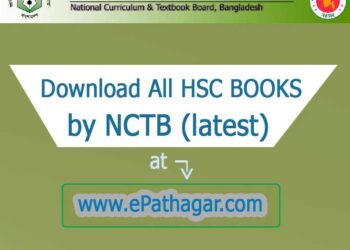

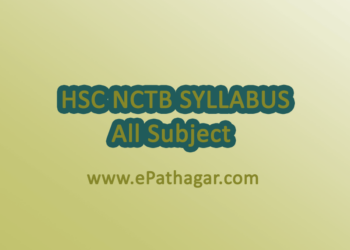
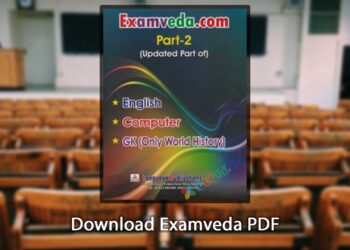

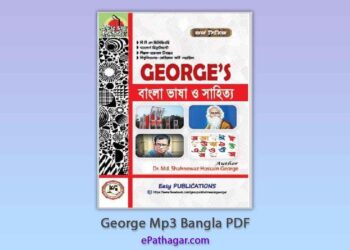




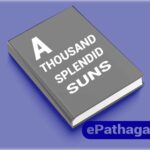

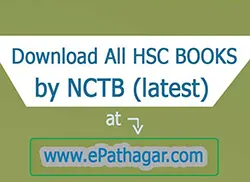
This Post Has 0 Comments